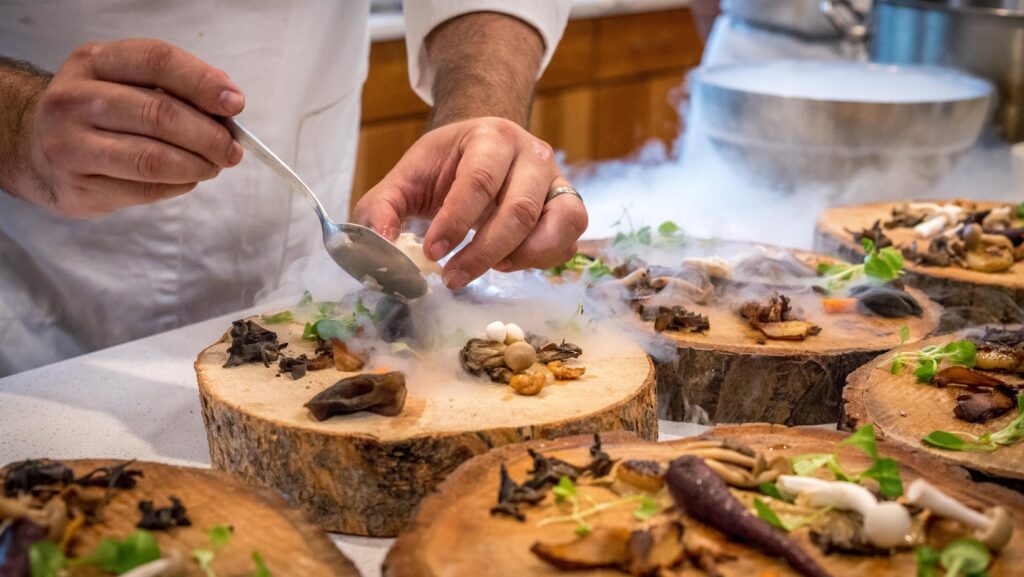Ever wondered about the journey of your food before it lands on your plate? You’re about to embark on a tantalizing tour through the history of food, tracing its evolution from primal hunting to today’s culinary masterpieces. It’s a story that’s not just about sustenance, but also about culture, innovation, and human survival.
The History Of Food
Having gained insight into the primal and cultural relationships with food, let’s now explore further into the pivotal period in which cooking emerged.
From Raw to Cooked: A Culinary Transformation
During the earlier stages of human evolution, raw food formed the lion’s share of diets. But, the onset of cooking completely redefined this approach. Evidence through archaeological studies suggest this transition took place nearly 1.9 million years ago. The change from raw to cooked was no mere food fad, instead it played a key role in humankind’s evolutionary trajectory.
Evidence suggests that early human diets incorporated a mix of raw fruits, vegetables, and raw meat. Cooking food, particularly meat, presented numerous benefits. Here’s what made cooked food a game changer for humanity:
- Increased Calorie Intake: Cooking breaks down complex food substances, making it easier for the body to process and absorb nutrients, thereby increasing calorie intake.
- Improved Digestion: Cooked food lessens the strain on your digestive system, making nutrients easier to absorb.
- Expanded Diet Options: Cooking expanded the range of consumable items, including roots, tubers, and grains that raw-food eaters had difficulty digesting.
- Enhanced Safety: Cooking eliminates parasites and harmful bacteria often found in raw food, thereby ensuring safer consumption.

Development of Farming: Grains and Domestication
You might be surprised that the first grains weren’t immediately palatable. Still, nonetheless, humans developed methods to transform these hard seeds into staples like bread and porridge. Soon, wild grains such as wheat and barley began to inch towards domestication about 12,000 years ago in the fertile region known as the ‘Fertile Crescent’.
Cultivation methods underwent subtle trial and error improvements, gradually leading to organized farming. Also, the concept of sowing and harvesting morphed humanity from nomadic wanderers into settled communities. Practices like these finally indicated a transition from the Palaeolithic era to the Neolithic era- an epoch identified by the rise in domesticated plants and animals.
The Silk Road: A Route of Spice and Ideas
Ordering a dish featuring basil or chili peppers on your dinner plate is second nature nowadays, but such spices’ journey began on the Silk Road. This trade route, established around 2nd century BCE, linked the East and West, serving as a conduit for goods, ideas – and food. Traders, pilgrims, and other travelers traversed these routes, bringing with them neoteric culinary ingredients and techniques. Take chili peppers, for example; originated in the Americas, they’re now a hallmark of Asian cuisines, specifically Thai and Szechuan.
Similarly, silk, as implied by the route’s name, wasn’t the only valuable commodity Asia delivered to the West. The Oriental markets were full of exotic spices—black pepper, cinnamon, nutmeg, and cloves, to name a few. European traders were enamored by the aromatic allure these spices offered, prompting their widespread popularity back home.

The Invention of Canning and Refrigeration
Advances in technology during the Industrial Age brought changes to the preservation of food. Canning, a preservation method introduced in the 19th century by Nicolas Appert, extended the shelf life of food significantly. By heating and sealing food in airtight containers, bacteria, yeasts, and molds that deteriorate food were successfully eliminated.
Similarly, at the turn of the 20th century, refrigeration transformed the food industry. Its advent allowed perishable foods, such as meat and dairy, to be stored for longer periods. Furthermore, it facilitated the transportation of food over long distances. For instance, Australian meat could reach British customers, a feat previously impossible due to spoilage.
As we look to the future, let’s remember the lessons from our past. Let’s continue to innovate, but also strive for balance, ensuring our diets nourish not just our bodies but also our societies. Because food, as you’ve seen, is not just about what’s on our plates. It’s about who we are, and who we aspire to be.
